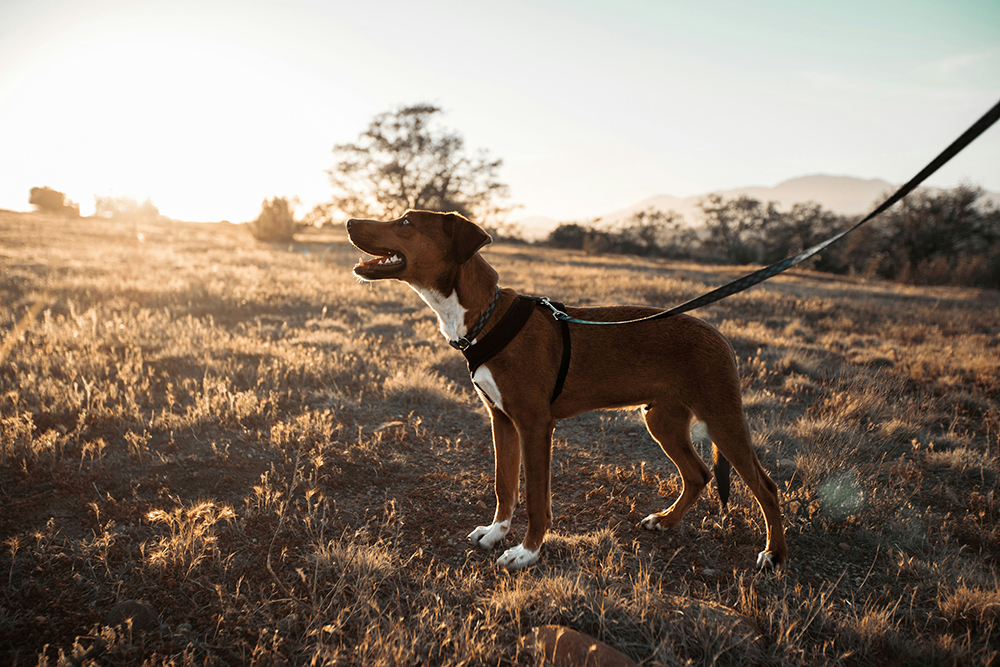By Heidi Clayton
If you are trying to get your dog fit and want to walk them briskly for exercise but struggle with them pulling or biting on the lead, it may not be solely the dog’s fault. Most of the issues I see between dogs and humans on a lead are a result of both parties being frustrated with each other. Keeping your dog in shape may mean moving them quicker than they are used to. They might get over-excited and start to pull you. Maybe they express their frustration by grabbing and biting at the leash. Both issues are completely fixable. Upping your leash-handling skills can solve the problem.
When trying to teach leash manners, forget about how far the walk is. Instead, focus on how good the walk is.
First, change how you hold the leash. Most people put the loop of the leash around their wrists and wrap the leash around their hands. Try putting the loop of the leash over your thumb and then making the leash shorter by wrapping it up inside your hand. Holding the leash short in your hand is different from holding it tight. Your hand and arm should stay relaxed at your side. Keeping a short leash also removes the leash as an option for your dog to tug on, thus correcting the problem. I recommend people start practicing walking their dogs for exercise in their driveway or backyard so they can be comfortable.
If your dog is a tenacious puller, allowing them to pull you down the street is giving them reinforcement that it is OK to pull you until they decide to settle down. Try planting your feet. Reward them for coming back to you, and wait for the leash to become slack in your hand. Start moving forward only when your dog has calmed down. I say “let’s go” and start walking at my pace, not the dog’s. That pace is usually a brisk walk for my dogs to actually get exercise. Remember, you are walking them to stay fit, not out for a sniff and stroll.
Good behavior that is consistently rewarded will be repeated. The same goes for bad behaviors. So, when your dog starts to pull you, stop dead in your tracks instead of saying “no” dozens of times. Pulling back on the leash while they are pulling, even if you are yelling at them to stop, is creating conflict. At the same time, it is also rewarding them with forward motion. Plant your feet and say nothing until they rejoin you. Wait for the leash to go slack in your hand, then allow them to move forward. That sends the clear message that pulling doesn’t work. Conversely, be sure to be consistent both with verbal praise and treats when they get it right.
When teaching your dog to walk nicely, you may want to start out at a slower pace and really praise them for being next to you. I recommend starting leash-walking practice in a boring and familiar environment like your driveway or backyard, where there are fewer distractions. You can adjust your pace and do laps across the backyard to get your dog to understand what you want from them on walks that will be devoted to exercise and not sniffing. Practicing going for a walk will also sharpen your leash-handling skills. With practice, you and your dog can become a team to stay fit and genuinely enjoy going for a walk together.
If you have any questions, please feel free to email me at heidi@fouronthefloordogtraining.net.
Heidi Clayton started Four On the Floor Dog Training to provide positive, reward-based dog training in South Jersey. She breeds, trains and shows bull terriers under the SoraBully’s Bull Terriers kennel name. Email questions to heidi@fouronthefloordogtraining.net or learn more at https://fouronthefloordogtraining.net











